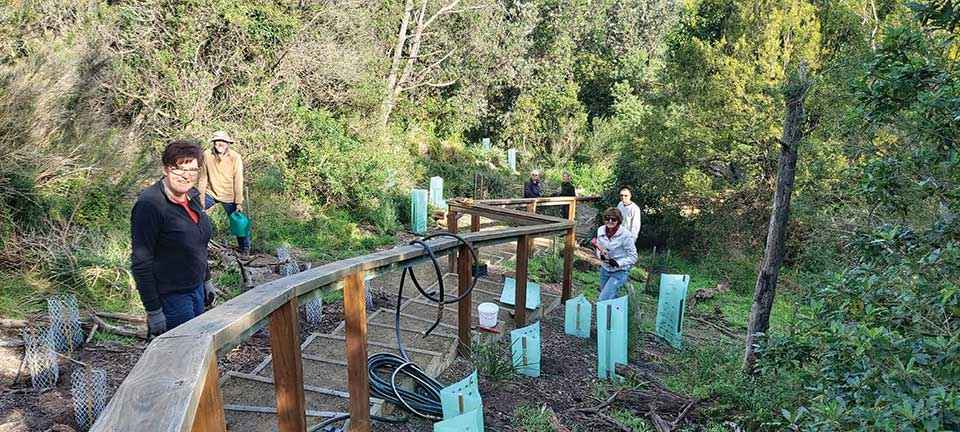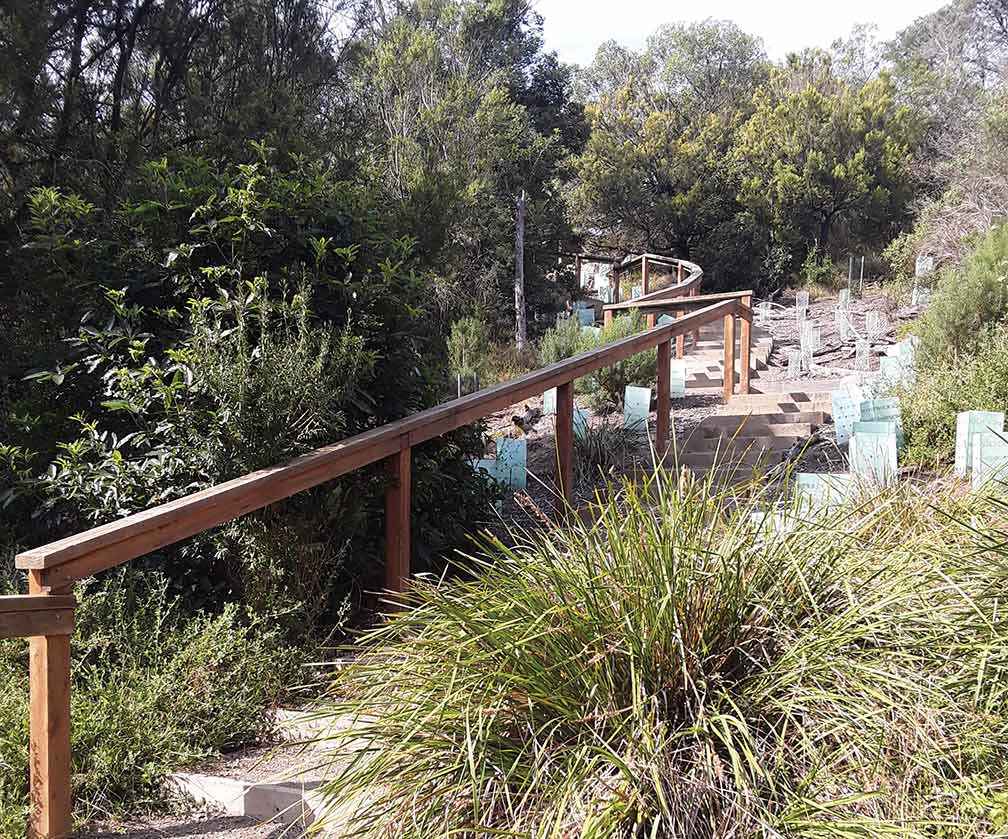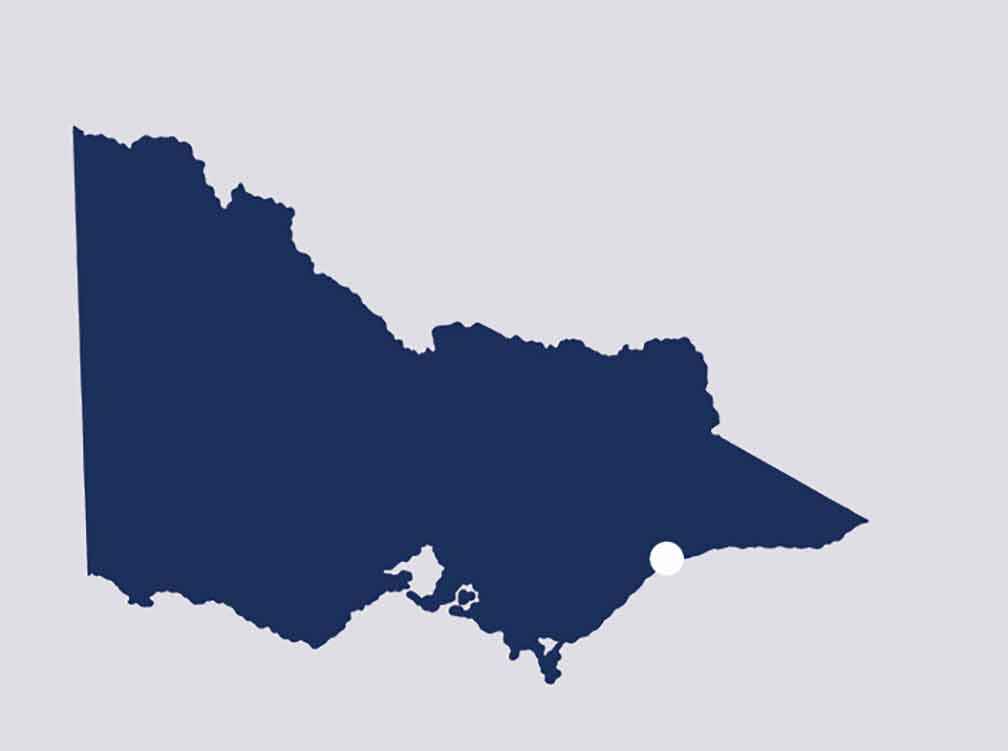Victorian Landcare Magazine - Winter 2021, Issue 81

Tambo Bluff Landcare Coastcare (TBLC) is proud of the recent changes at Tambo Bluff Estate at Metung, adjacent to 90 Mile Beach. A set of 100 wooden steps wind beautifully through restored banksia woodland and hundreds of new native plants indigenous to the area.
A set of 100 wooden steps wind beautifully through restored banksia woodland and hundreds of new native plants indigenous to the area. The original eroded escarpment was part of the old sea cliffs that existed prior to the formation of the Gippsland Lakes.
Several geological layers and land formations laid down over millions of years can be seen in places along the cliff-face but water, wind and time caused a slump in the deep sand deposit. Several old foot tracks created by haphazard pedestrian use had depleted the native vegetation. The thin, erodible soils were not helped by poor drainage and the impact of farming dating back to the 1860s – particularly over-grazing and rabbits.
The fine sand beach that was the focus of family picnics decades ago, has shifted and been altered by prevailing south-westerly winds and storm waves, causing a dynamic change in the environment along the coastline. Much of the sand was moved inland by floodwater and storm waves in the 1990s. A dune swale that lies behind a secondary dune and barrier beach was built up over thousands of years and connects to Dolphin Lagoon to the north, which formed as the barrier beach cut off stream flow to the lake.
In 2005, East Gippsland Shire Council (EGSC) adopted a Tambo Bluff Subdivision Review. Four major walking tracks were proposed by residents and TBLC to replace informal tracks leading from the clifftops to the coastal beaches that were damaging the environment. James Street was identified as a priority.
EGSC decided an existing goat track would be replaced with 100 steps. Plantings of agapanthus were removed and an eradication program for various garden escapees like century plant that was growing on the cliffs, was undertaken.
The project was funded by EGSC and Coastcare, with plenty of people power from TBLC. The mass indigenous planting, maintenance, and watering regimes by TBLC have paid off and the steps now provide an unobtrusive access to Lake King. A mesh path at the bottom of the steps links to the remaining beach track, which was left in its natural state to regenerate.
At the top and bottom of the walkway two illustrated information boards highlight the local birds and animals. A directional bollard on the beach completes the project.
The revegetation provides important habitat and refuge for many native species including swamp wallaby, eastern swamp rat, bush rat, and agile antechinus. Echidnas and wombats also live here.

Above: The 100 steps at Tambo Bluff after completion.
The 100 steps were important for local safety and wellbeing during the recent bushfires, forming an integral part of residents’ evacuation plans. During COVID restrictions the 100 steps offered a secluded, natural environment as an alternative to home exercise and were used by many residents and visitors.
Meralin Fawcus is a committee member of TBLC.
For more information email president@tblc.org.au

Above: Location map - Metung